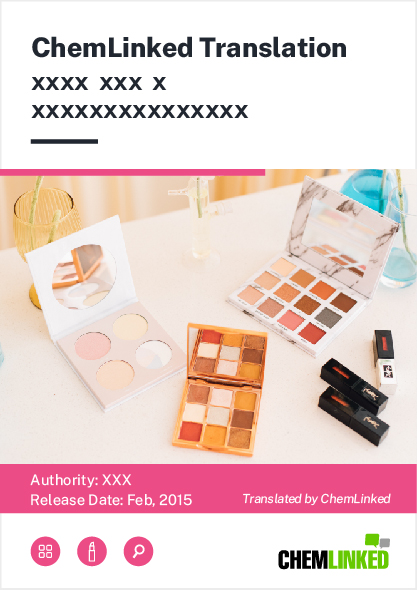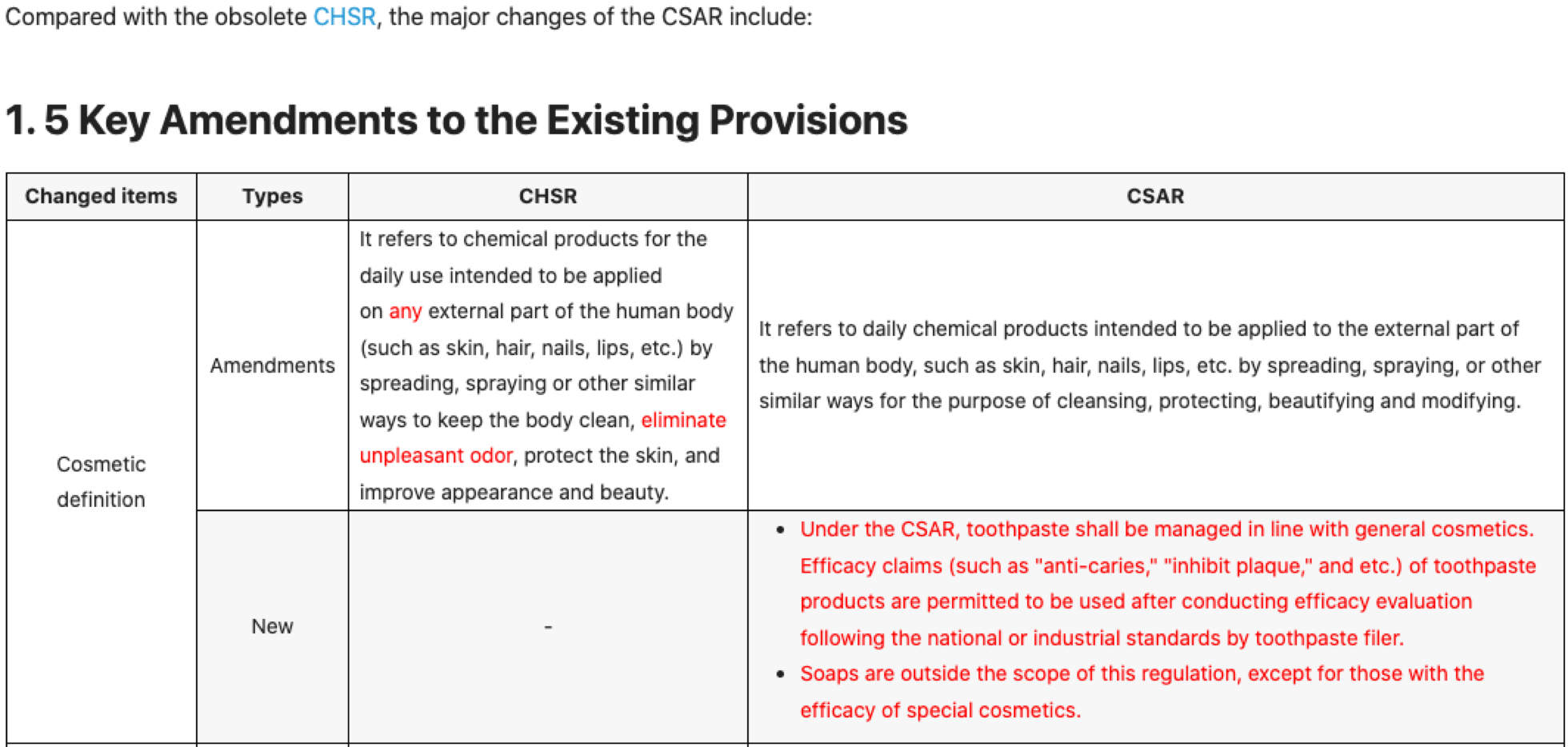On March 31, 2022, China National Institutes for Food and Drug Control (NIFDC) released a draft of the Safety and Technical Standard for Cosmetics 2022 (STSC 2022) for public comments. The consultation will end on Apr. 30, 2022. Stakeholders with any suggestions can fill out the feedback form and send it back by email at hzpbwh@nifdc.org.cn before that.
Along with the draft STSC 2022, the Revision Explanation and Revision Comparison Table of Safety and Technical Standards for Cosmetics 2022 (Draft for Comments) was also published. The Revision Explanation and Revision Comparison Table is in the process of urgent translation and will be available on April 13. If you also need the translation service of the full text or certain parts STSC 2022, please feel free to contact us at cosmetic@chemlinked.com.
STSC is the overarching technical standard for cosmetics safety supervision and testing in China. It contains the prohibited, restricted, and permitted cosmetic ingredients, physical and chemical testing methods for cosmetics, microbiological testing methods, toxicological testing methods, human body safety testing methods, and human body efficacy evaluation testing methods.
Under China’s new cosmetic regulatory framework, STSC 2015 is lagging behind in some aspects and can no longer fully match the development of industry and supervision. Therefore, China NIFDC plans to introduce a more systematic and comprehensive version to supersede the existing 2015 version, making the standards further consistent with the current industry situation.
Compared with the 2015 version, the framework of the 2022 version remains basically unchanged. The draft STSC 2022 revises the content that is not suitable for the current supervision practice, retains the content that still applies, incorporates the previous approved revisions for STSC 2015 (they were issued as notifications), as well as standardizes and improves some terms and expressions.
Table of Content:
Chapter 1 Overview
Chapter 2 Prohibited/Restricted Ingredients Used in Cosmetics
1 Prohibited Ingredients Used in Cosmetics (1) (2) (List 1)
2 Prohibited Plant/Animal Ingredients Used in Cosmetics (1) (2) (3) (List 2)
3 Restricted Ingredients Used in Cosmetics (List 3)
Chapter 3 Permitted Ingredients Used in Cosmetics
1 Permitted Preservatives Used in Cosmetics (1) (List 4)
2 Permitted Sunscreens Used in Cosmetics (1) (List 5)
3 Permitted Colorants Used in Cosmetics (1) (List 6)
4 Permitted Hair Dyes Used in Cosmetics (1)(2) (List 7)
Chapter 4 Physical and Chemical Testing Methods for Cosmetics
1 General Principles
2 Testing Methods of Prohibited Ingredients
3 Testing Methods of Restricted Ingredients
4 Testing Methods of Preservatives
5 Testing Methods of Sunscreens
6 Testing Methods of Colorants
7 Testing Methods of Hair Dyes
8 Other Testing Methods
Chapter 5 Methods of Microbiological Test
1 General Principles-
2 Aerobic Bacterial Count
3 Thermotolerant Coliform Bacteria
4 Pseudomonas Aeruginosa
5 Staphylococcus Aureus
6 Molds and Yeast Count
Chapter 6 Methods of Toxicological Test
1 General Principles
2 Acute Oral Toxicity Test
3 Acute Dermal Toxicity Test
4 Dermal Irritation/Corrosion Test
5 Acute Eye Irritation/Corrosion Test
6 Skin Sensitisation Test
7 Skin Phototoxicity Test
8 Skin Photoallergy Test
9 Bacterial Reverse Mutation Assay
10 In Vitro Mammalian Cells Chromosome Aberration Test
11 In Vitro Mammalian Cell Gene Mutation Test
12 In Vivo Mammalian Bone Marrow Cell Chromosome Aberration Test
13 Mammalian Erythrocyte Micronucleus Test
14 Testicle Cells Chromosome Aberration Test
15 Subchronic Oral Toxicity Test
16 Subchronic Dermal Toxicity Test
17 Teratogenicity Test
18 Combined Chronic Toxicity / Carcinogenicity Test
Chapter 7 Human Body Safety Testing Method
1 General Principles
2 Human Skin Patch Test
3 Cosmetic Safety In-use Test
Chapter 8 Human Body Efficacy Evaluation Testing Method
1 General Principles
2 In Vivo Test Method for the Sun Protection Factor (SPF) of Sunscreen Cosmetics
3 Test Method for Water Resistance of Sunscreen Cosmetics
4 In vivo Test Method for the UVA Protection of Sunscreen Cosmetics
5 Test Method for Efficacy Measurement of Skin Whitening Cosmetic Products
6 Test Method for Efficacy Measurement of Anti-hair Loss Cosmetic Products









 Original regulatory document
Original regulatory document
